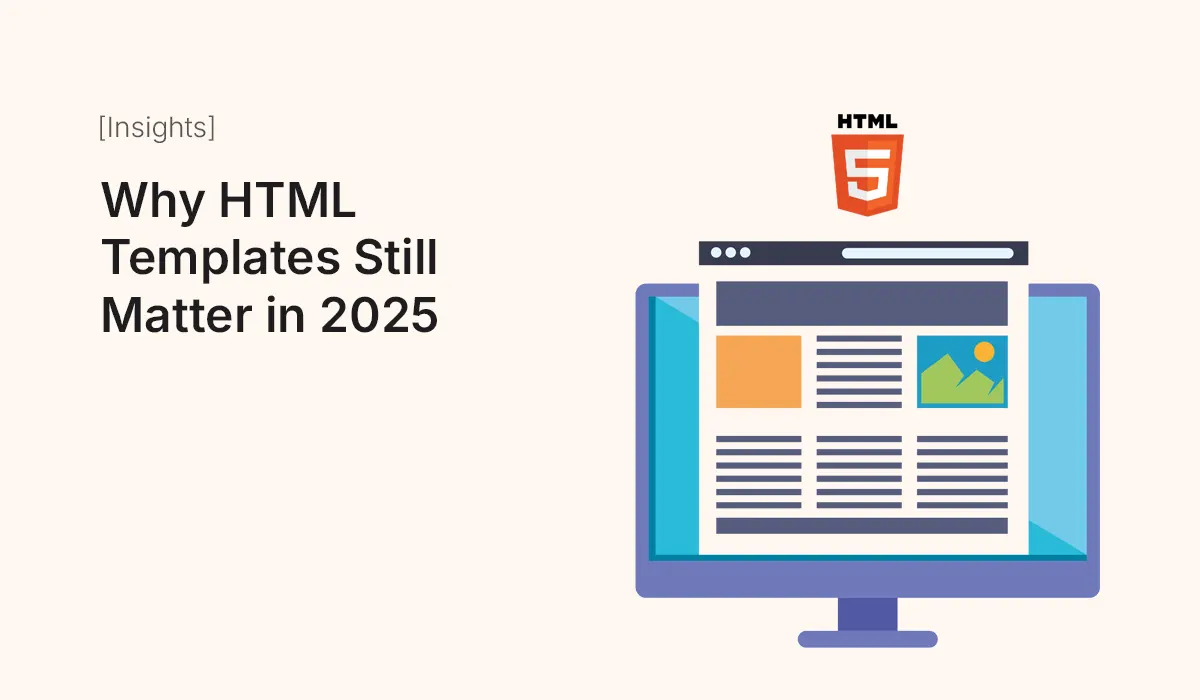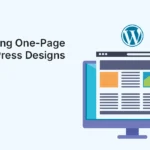Introduction
Even with the rise of no-code website builders, CMS platforms, and AI-generated websites, HTML templates remain highly relevant. In 2025, developers, designers, and businesses continue to use them for speed, flexibility, and control.
This article explores why HTML templates still matter, their advantages in modern web development, and how they fit into the evolving digital landscape.
The Evolution of Web Development
Web development has changed dramatically over the last decade:
- 2000s: Static HTML sites dominated. Developers manually coded every page.
- 2010s: CMS platforms like WordPress, Joomla, and Drupal became popular. Templates were integrated into themes.
- 2020s: No-code platforms, AI design tools, and static site generators (like Gatsby, Hugo, and Jekyll) emerged.
Yet, HTML templates continue to play a vital role for developers who value control, performance, and customization.
Why HTML Templates Remain Relevant
Speed of Development
Templates provide a ready-made structure, so developers don’t need to start from scratch. This is especially useful for:
- Personal portfolios
- Landing pages
- Small business websites
- Event or campaign microsites
Learning Tool for Beginners
For newcomers to web development, HTML templates are excellent for learning:
- Examine HTML, CSS, and JS structure
- Understand responsive layouts
- Experiment with customization without breaking a site
Flexibility and Full Control
Unlike CMS themes or no-code platforms, HTML templates give direct access to all code.
- Modify layouts, styling, and functionality
- Integrate custom scripts or APIs
- Remove unnecessary code for speed
Performance and Speed
Static HTML templates are lightweight and load faster than many CMS-based websites. Speed is critical for:
- SEO rankings
- User experience
- Reducing bounce rates
Cost-Effectiveness
Many high-quality HTML templates are free or low-cost, providing professional design without hiring a designer.
Compatibility with Modern Tools
HTML templates can easily integrate with:
- CSS frameworks (Bootstrap, Tailwind)
- Static site generators (Hugo, Jekyll, Gatsby)
- Hosting platforms like Netlify, Vercel, or GitHub Pages
- AI-assisted web design tools
Types of HTML Templates Still in Use
- Portfolio Templates – Showcases for designers, photographers, and developers.
- Business & Startup Templates – For agencies, tech startups, and consultancies.
- Landing Page Templates – Marketing campaigns, product launches, and events.
- E-commerce Templates – Static storefronts or frontend for headless commerce.
- Admin Dashboard Templates – For web apps and SaaS products.
Common Misconceptions About HTML Templates
1: “HTML templates are outdated.”
- Reality: They are more relevant than ever for static sites, JAMstack, and performance-oriented projects.
2: “They’re only for beginners.”
- Reality: Professionals use templates to save time, test ideas, and prototype quickly.
3: “They limit creativity.”
- Reality: Templates are fully customizable—you can change layouts, styles, and integrate dynamic features.
Modern Use Cases for HTML Templates
- Rapid Prototyping: Quickly create a working version of a site before finalizing the design.
- Portfolio Websites: Developers and creatives use templates to showcase work efficiently.
- Microsites & Landing Pages: Campaigns that require fast deployment benefit from ready-made templates.
- Educational Projects: Templates are excellent for teaching web development and coding basics.
- Lightweight Business Websites: Small companies can launch functional websites without heavy CMS platforms.
Advantages of Using HTML Templates in 2025
- Time-Saving – Launch websites faster.
- SEO-Friendly – Clean code helps with search engine indexing.
- Cross-Browser Compatibility – Most templates are tested for modern browsers.
- Responsive Design – Mobile-first layouts ensure usability on all devices.
- Learning & Experimentation – Developers can edit and test features safely.
Future of HTML Templates
Even with AI-generated websites and advanced frameworks, HTML templates will continue to thrive because:
- They are fast and lightweight, crucial for user experience.
- They are fully customizable, allowing developers full control.
- They integrate seamlessly with modern web technologies like JAMstack, headless CMS, and frontend frameworks.
- They remain an excellent learning tool for the next generation of web developers.
Conclusion
HTML templates are far from obsolete. In 2025, they remain a powerful tool for developers, designers, and small businesses alike. They provide speed, flexibility, cost-effectiveness, and learning opportunities. Whether you’re launching a portfolio, a landing page, or a small business website, HTML templates are a reliable starting point that saves time and ensures professional results.
Explore and use HTML templates today to accelerate your web development projects. Even in 2025, they remain essential for building fast, professional, and customizable websites!






